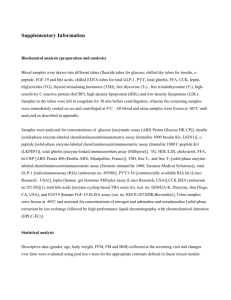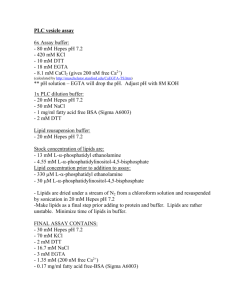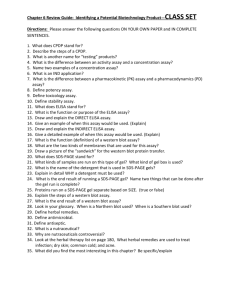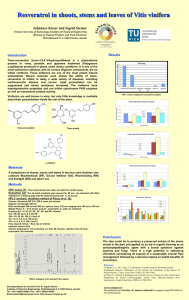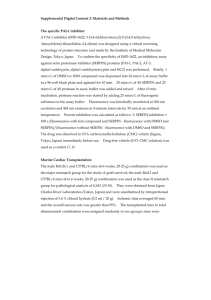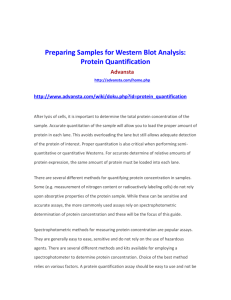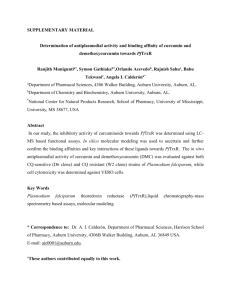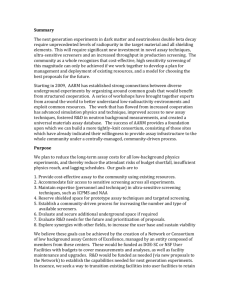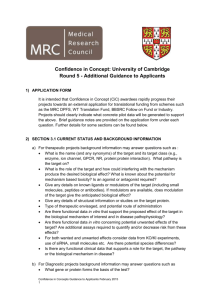January 27, 2014 - University of Virginia
advertisement
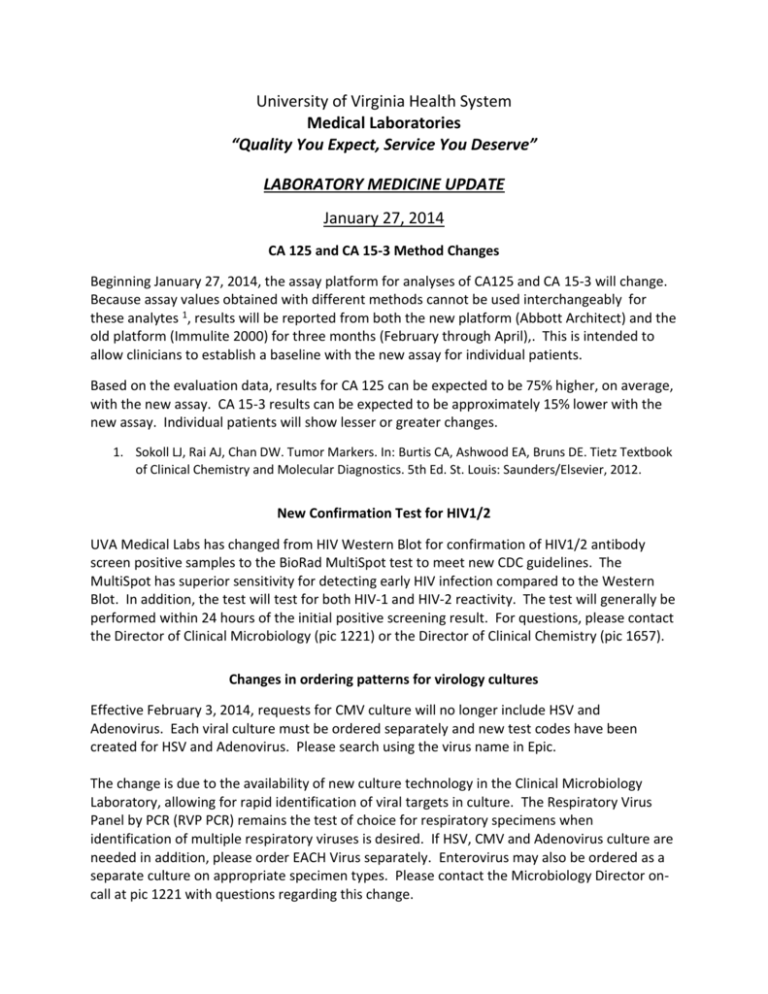
University of Virginia Health System Medical Laboratories “Quality You Expect, Service You Deserve” LABORATORY MEDICINE UPDATE January 27, 2014 CA 125 and CA 15-3 Method Changes Beginning January 27, 2014, the assay platform for analyses of CA125 and CA 15-3 will change. Because assay values obtained with different methods cannot be used interchangeably for these analytes 1, results will be reported from both the new platform (Abbott Architect) and the old platform (Immulite 2000) for three months (February through April),. This is intended to allow clinicians to establish a baseline with the new assay for individual patients. Based on the evaluation data, results for CA 125 can be expected to be 75% higher, on average, with the new assay. CA 15-3 results can be expected to be approximately 15% lower with the new assay. Individual patients will show lesser or greater changes. 1. Sokoll LJ, Rai AJ, Chan DW. Tumor Markers. In: Burtis CA, Ashwood EA, Bruns DE. Tietz Textbook of Clinical Chemistry and Molecular Diagnostics. 5th Ed. St. Louis: Saunders/Elsevier, 2012. New Confirmation Test for HIV1/2 UVA Medical Labs has changed from HIV Western Blot for confirmation of HIV1/2 antibody screen positive samples to the BioRad MultiSpot test to meet new CDC guidelines. The MultiSpot has superior sensitivity for detecting early HIV infection compared to the Western Blot. In addition, the test will test for both HIV-1 and HIV-2 reactivity. The test will generally be performed within 24 hours of the initial positive screening result. For questions, please contact the Director of Clinical Microbiology (pic 1221) or the Director of Clinical Chemistry (pic 1657). Changes in ordering patterns for virology cultures Effective February 3, 2014, requests for CMV culture will no longer include HSV and Adenovirus. Each viral culture must be ordered separately and new test codes have been created for HSV and Adenovirus. Please search using the virus name in Epic. The change is due to the availability of new culture technology in the Clinical Microbiology Laboratory, allowing for rapid identification of viral targets in culture. The Respiratory Virus Panel by PCR (RVP PCR) remains the test of choice for respiratory specimens when identification of multiple respiratory viruses is desired. If HSV, CMV and Adenovirus culture are needed in addition, please order EACH Virus separately. Enterovirus may also be ordered as a separate culture on appropriate specimen types. Please contact the Microbiology Director oncall at pic 1221 with questions regarding this change. Changes to Testosterone Reference Intervals In early January 2014, the method for measurement of testosterone was changed from the Immulite 2000 assay to the Abbott Architect second-generation assay. The new assay shows improved performance compared with the Immulite assay (and with first-generation assays)1. The reference intervals for the second-generation Architect assay are the following: Males 19-60Y 250-1000 ng/dL >60Y 220-716 ng/dL Females 19-50Y 14-53 ng/dL >50Y 12-36 ng/dL 1. Groenestege WM, Bui HN, ten Kate J, Menheere PP, Oosterhuis WP, et al. Accuracy of first and second generation testosterone assays and improvement through sample extraction. Clin Chem. 2012;58:1154-6. Changes to Sex Hormone Binding Globulin (SHBG) Reference Intervals In early January 2014, the method for measurement of Sex Hormone Binding Globulin (SHBG) was changed from the Immulite 2000 assay to the Abbott Architect assay. The new assay shows improved performance compared with the Immulite assay1. The reference intervals for the Architect assay are the following: Males >18Y 11-78 nmol/L Females >18Y 12-137 nmol/L During the transition to the new assay, patient reports were released with incorrect reference intervals. All such reports are in the process of being revised to reflect the correct reference interval. We apologize the any inconvenience and if there are further questions, please contact the Chemistry Director on-call (pic 1657). 1. College of American Pathologists. CAP Accuracy Based Testosterone and Estradiol Survey 2013. http://www.cap.org/apps/docs/committees/chemistry/accuracy_based_testosterone_and_estr adiol_survey_2013.pdf (Accessed January 27, 2014)
